We have all seen Ubuntu 13.10 and the incremental improvements that it
brought. Though the distro in itself was really good but it wasn't
something tempting enough to actually leave Ubuntu Precise, the LTS one
with support till April 2017, and adopt Ubuntu Saucy Salamander, with 6
months of support. At that point in time, I thought Mint would make it's
release pretty soon. So, ultimately, on the last day of November 2013,
the Linux Mint 16, named Petra, is out with it's home grown desktops,
Cinnamon and Mate. I thought still 4+ months support is remaining for
Saucy and hence, possibly worth trying.
I downloaded the 32-bit ISOs (with pae kernel and hence, works very well
with 64 bit machines), each about 1.2 GB in size and installed them on
separate partitions on my two machines:
- Asus K55VM laptop with 2.3 Ghz Core i7 processor with 8 GB DDR3 RAM and 2 GB NVIDIA GeForce GT 630M hybrid graphics
- Asus K54C laptop with 2.2 Ghz Core i3 processor with 2 GB DDR3 RAM and Intel HD 3000 graphics
Like Ubuntu Saucy, Linux Mint 16 ships with Linux Kernel 3.11.0 with
Cinnamon 2.0 and Mate 1.6 desktop environments. Except for the
difference in DE, there is little to differentiate between the two
distros. First I take up the incremental improvements that are in the
release notes and additional improvements that I experienced during my
usage.
Improvements in Cinnamon version
I take up Cinnamon version first as here the improvements are more
pronounced that Mate. The following improvements are stated in the
release note of Linux Mint 16 Cinnamon version:
1. Cinnamon 2.0, much lighter and much more stable than the previous
versions though it looks pretty much the same as the previous versions.
Options for subtle animations are there in Cinnamon including
compositing, but animations are as catchy as a KDE 4.11.
2. The ability to play sounds when common events like starting Mint,
switching desktop, minimizing or maximizing windows. Good that only few
are enabled by default and users can manipulate the settings as per
individual preference. Otherwise, too much of sound may be a bit
distracting to regular use.
3. A new applet to perform session and account related tasks. It is very
functional and welcomed addition. Also, the functionality of changing
login pictures, password and name is a good addition to make Cinnamon
more functional.
System administrators have now a tool to manage users and groups in Cinnamon.
4. Edge tiling is perhaps the most catchy addition that I experienced in
Mint Cinnamon. Pressing "Super+L+right/left/top/down arrow" after
clicking any window places it tiles on one of the edges. It was already
there in previous releases but it is more fine tuned now.
Another impressive feature is edge snapping though I didn't use it much. Hence, no screenshot. The release note states:
"Edge-Snapping is the most impressive feature in Cinnamon 2.0. It was
inspired by the Snap functionality of Xbox One. It is similar to
Edge-Tiling (the window sticks to the edge or corner of the screen,
occupies half of the screen and can be resized) but with one key
difference: Maximized windows do not cover snapped windows".
5. Nemo improvements: Nemo 2.0.8 is now loaded with a host of features
and better aesthetics. It works a lot faster, support more programs than
previous versions and allows to monitor progress while copying or
moving the files. Another welcome addition of a more versatile file
manager.
6. New login screen: MDM 1.4 with a new attractive interface to allow
login and switch between users along with enabling features like
autologin.
7. USB Stick Formatter: A new tool to easily format USB to NTFS, FAT32
and ext4. It is a very required addition, I feel, for users like me who
use pen drive regularly for Linux testing. The formatting functionality
is present in GNOME 3 but not in KDE or any other DE. Good that now
Cinnamon has that capability.
8. Faster MintInstall or Software Manager: MintInstall 7.5.1 works much
faster than the previous Mint Software Managers. Actually this has been a
long time complain from my side, Mint Software Center was painfully
slow and much more inefficient compare to Ubuntu or Debian Software
Center. However, the present version is promising and I see at least 50%
improvement in speed.
9. Faster boot and login: Previous Mint releases used to be slower
compared to Ubuntu releases. I reported that while comparing between
Mint and Ubuntu earlier. Thankfully this version boots much faster and
is comparable to the boot time taken by Ubuntu Saucy.
Other features that I experienced while using Mint Cinnamon are:
10. 116 Cinnamon themes to decorate desktop - some are quite good but
quite a few are trash as well. Now Cinnamon is building an ecosystem
similar to KDE, I suppose. The default theme is also appealing
aesthetically and looks very professional.
11. Improvement in artwork: quite a few catchy new wallpapers and
incremental improvement in artwork in the new addition is a welcome
step. Specially I should mention of font rendering - very few Linux
distros are as pleasing to work as Linux Mint.
12. Windows shortcuts like pressing Super / Window key opens Menu, hot
corners to see all workspaces, etc. are welcome addition and very
functional.
13. No unwanted issues like USB or external hard drives not
auto-mounting, or inability to edit stuff in USBs, etc. which kind of
limit user experience. Mint is possibly the most user-friendly Linux
distro I've used. Period.
Improvement in Mate version
Mate version is comparatively poorer in terms of DE improvements. It has
# 6 to 9 and 11, 13 to showcase in this version. Further, look-wise
Mate is paler compared to Cinnamon.
Now I move to my regular stuff, taking each aspect of the distro one-by-one.
Aesthetics
As discussed, aesthetically Cinnamon looks much more appealing with it's
black panel and good looking menu. Developers paid a lot of attention
to details no doubt - it is evident right from boot splash and login
screen to application interfaces and font rendering.
Mate, on the other hand, is a bit paler in comparison and didn't appeal to me much.
Same holds for Nemo versus Caja. Nemo looks better than any other file manager I have used.
Another important thing I would like to mention is application interface
optimization. For example, LibreOffice Calc, I use it a lot and in many
Linux OS I face the issue of either the worksheet navigation tabs
disappearing altogether or too small for legitimate viewing. In Linux
Mint 16, they appear perfect. I guess Mint developers can give a lesson
or two to other distros about aesthetics. It is not just limited to
creating a catchy interface but also giving adequate attention to
details.
Hardware Recognition
Hardware recognition of Linux Mint is top notch and I didn't face any
issue with the release. Only one issue I faced after installing
bumblebee in Mate - for sometime the network icon showed no connection
though I was connected and was able to browse internet. Possibly a bug
but luckily for me things came back to normal after an update and
reboot.
Touchpad is supported well by both though I had to manually enable
vertical scroll and tap functions. Now one interesting thing I observed,
like Ubuntu 13.10, the touchpad gestures in Mint 16 function in
opposite direction to previous releases of Ubuntu/Mint or any other
Linux distro I've used. It is a bit uncomfortable to use initially but
gradually I got used to it.
Installation
Installation is same as before for both and no Ubuntu One login during
installation in Mint! The steps are usual and no surprises there. It
should not challenge even a Linux novice to install Mint.
Applications
Both Mint Mate and Cinnamon ship with almost similar application sets
(though Mate has some of it's own homegrown apps like Eye of Mate Image
viewer, Pluma 1.6.2, etc. but Cinnamon has their GNOME 3 counterparts). I
give here a list of the prominent applications:
- Office: LibreOffice 4.1.2.3 Cbase, Calc, Draw, Impress & Writer, Document viewer
- Internet: Firefox 25.0.1, Pidgin IM, Thunderbird, Transmission, Xchat IRC, Remmina Desktop Sharing
- Graphics: GIMP 2.8.6, gthumb, Image Viewer, Simple Scan, Screenshot
- Multimedia: Banshee music player, Brasero CD/DVD writer, Videos 3.8.2, VLC 2.0.8
- Accessories: Archive Manager,
Calculator, Font viewer, Terminal, gedit, Tomboy Notes, USB Image
Writer, USB Stick Fomatter, Backup tool, Gdebi Package Installer, Log
file viewer, Login window, New login
Mint 16 ships with all multimedia codecs and Adobe flashplugin
pre-installed. Further, language support of Mint is very good and I
could easily internet content in my vernacular language, Bengali.
Compositing is enabled by default in Cinnamon but not in Mate. In Mate, I
had to manually enable compositing from Settings manager -> Desktop
Settings.
Every application worked out of the box in Mint, I must say. I guess this is the beauty of Linux Mint - it just works.
Integrated Settings Manager
Both Cinnamon and Mate ship with very integrated settings manager
supporting desktop decoration to user ID creation. It is very helpful
for novice Linux users and I found the settings manager very functional
in small-small things like changing preferred applications, adding or
removing applications from start up, etc. Preference in Menu also
provide separate entries of the settings options.
Repositories
Mint sources applications from Ubuntu Saucy repositories primarily with a
little of addition from Linux Mint itself. I find Mint to have a richer
ensemble of applications e.g. applications like Skype, etc. are not
there in Ubuntu Saucy repos by default but are present in Mint.
Software sources is a good addition in this regard to manipulate the official repositories and user added ppa's.
You can see here the third party ppa's I added in PPAs and Additional Repositories.
Additionally, Synaptic package manager and gdebi package installer are
present in the distro as well. Synaptic is still the fastest package
manager I've used and nothing beats gdebi in installing locally
downloaded package files.
I downloaded Skype 4.2, Virtualbox 4.3 and Chromium through MintInstall
and Google Chrome through gdebi. All of them got installed resolving all
dependencies and worked without any issue.
Installing Bumblebee for Nvidia card support
With Ubuntu Saucy experience, I didn't take any risk in Linux Mint 16.
Straight away I added bumblebee ppa and installed bumblebee to my Asus
K55VM with hybrid graphics. Laptop heat came down significantly and I
got prolonged battery life. The commands I used are given below:
sudo add-apt-repository ppa:bumblebee/stable
sudo apt-get update
sudo apt-get install bumblebee bumblebee-nvidia primus linux-headers-generic
Performance
Now the most interesting part - performance. To my surprise, Mint 16
Cinnamon actually felt better to use than Mint 16 Mate. On the same
machine, both recorded comparable resource usage, with Cinnamon
marginally better. Undoubtedly Cinnamon developers have put a lot of
work in fine tuning Cinnamon 2.0. Also, I received better battery backup
in Cinnamon.
If I compare Mint 16 Cinnamon and Mate's performance to other GNOME 3 /
derivatives released in 2012/13, both feature in the top 15 distros I've
used. All the statistics are recorded from 32-bit versions under
comparable scenarios with task manager/system monitor running and in
various point of time during 2012/13.
| Operating System |
Size of ISO |
Base |
Desktop |
Linux kernel |
CPU Usage |
RAM usage |
Size of installation |
| Snowlinux 4 Mate |
919 MB |
Ubuntu |
Mate 1.6.0 |
3.8.0 |
1-5% |
120 MB |
4.58 GB |
| Trisquel 6.0 |
730 MB |
Ubuntu |
Gnome Classic |
3.2.0 |
1-10% |
146 MB |
|
| Snowlinux 4 Glacier Mate |
980 MB |
Debian |
Mate 1.4 |
3.5.0 |
1-5% |
147 MB |
|
| Mint 201303 Cinnamon |
1.3 GB |
Debian |
Cinnamon 1.6 |
3.2.0 |
1-10% |
162 MB |
|
| Pure OS 6 |
717 MB |
Debian |
Gnome 3.4.2 |
3.5.0 |
1-5% |
165 MB |
|
| PCLinuxOS 2013.10 Mate |
621 MB |
PCLinuxOS |
Mate 1.6.1 |
3.4.52 |
1-5% |
167 MB |
2.24 GB |
| PointLinux 2.2 |
984 MB |
Debian |
Mate 1.4.2 |
3.2.0 |
1-5% |
168 MB |
3.13 GB |
| Mint 15 Cinnamon |
973 MB |
Ubuntu |
Cinnamon 1.8 |
3.8.0 |
1-10% |
173 MB |
8.58 GB |
| Mint 15 Mate |
1.1 GB |
Ubuntu |
Mate 1.6.0 |
3.8.0 |
1-5% |
174 MB |
4.9 GB |
| Sabayon 11 Mate |
848 MB |
Gentoo |
Mate 1.4.1 |
3.7.0 |
1-5% |
174 MB |
|
| Mint 201303 Mate |
1.3 GB |
Debian |
Mate 1.4 |
3.2.0 |
1-5% |
175 MB |
|
| Mint 16 Petra Cinnamon |
1.2 GB |
Ubuntu |
Cinnamon 2.0 |
3.11.0 |
1-5% |
178 MB |
4.75 GB |
| Pear OS 8 |
1 GB |
Ubuntu |
Gnome 3.6.3 |
3.8.0 |
1-10% |
190 MB |
3.67 GB |
| Mint 16 Petra Mate |
1.3 GB |
Ubuntu |
Mate 1.6.0 |
3.11.0 |
1-10% |
190 MB |
4.85 GB |
| Zorin OS 7 |
1.5 GB |
Ubuntu |
Gnome 3.6 |
3.8.0 |
1-10% |
195 MB |
8.60 GB |
| Manjaro Mate 0.8.7.1 |
1.1 GB |
Arch |
Mate 1.6.1 |
3.10.15 |
1-10% |
198 MB |
4.86 GB |
| Mint 13 Cinnamon |
857 MB |
Ubuntu |
Cinnamon 1.4 |
3.2.0 |
1-10% |
200 MB |
|
| Mint 14 Mate |
1 GB |
Ubuntu |
Mate 1.4 |
3.5.0 |
1-5% |
200 MB |
|
| Mint 13 Mate |
942 MB |
Ubuntu |
Mate 1.2 |
3.2.0 |
1-5% |
207 MB |
|
| Antergos 2013.08.20 |
671 MB |
Arch |
GNOME 3.8.4 |
'3.10.0 |
1-10% |
207 MB |
3.6 GB |
| Mint 14 Cinnamon |
922 MB |
Ubuntu |
Cinnamon 1.6.7 |
3.5.0 |
1-10% |
221 MB |
|
| Pear OS 6 |
862 MB |
Ubuntu |
Pear Aurora 1.0.5 |
3.2.0 |
1-5% |
235 MB |
|
| ROSA 2012 Fresh Gnome |
1.1 GB |
Mandriva |
Gnome 3.6.2 |
3.6.10 |
1-10% |
235 MB |
|
| Linux Deepin 12.12.1 |
1.2 GB |
Ubuntu |
GNOME 3.8 |
3.8.0 |
1-10% |
240 MB |
4.0 GB |
| Snowlinux 3 White Mate |
827 MB |
Ubuntu |
Mate 1.4 |
3.5.0 |
1-5% |
240 MB |
|
| Snowlinux 4 Cinnamon |
849 MB |
Ubuntu |
Cinnamon 1.8 |
3.8.0 |
1-10% |
245 MB |
12 GB |
| Ubuntu 12.04.3 LTS |
741 MB |
Ubuntu |
Unity 5.20.0 |
3.8.0 |
1-10% |
250 MB |
3.06 GB |
| Ubuntu GNOME 13.10 |
919 MB |
Ubuntu |
GNOME 3.8.4 |
3.11.0 |
1-10% |
256 MB |
3.37 GB |
| Snowlinux 3 White CInnamon |
760 MB |
Ubuntu |
Cinnamon 1.6.7 |
3.5.0 |
1-5% |
260 MB |
|
| Elementary OS |
651 MB |
Ubuntu |
Pantheon |
3.2.0 |
1-5% |
270 MB |
|
| LuninuX 12.10 |
1500 MB |
Ubuntu |
Gnome 3.6 |
3.5.0 |
1-5% |
280 MB |
|
| Ubuntu 13.04 Gnome |
1 GB |
Ubuntu |
Gnome 3.8 |
3.8.0 |
1-10% |
280 MB |
|
| Zorin 6.4 Educational |
2 GB |
Ubuntu |
GNOME 3.4.2 |
'3.2.0 |
1-10% |
285 MB |
5.6 GB |
| Fedora 17 Gnome |
677 MB |
Fedora |
Gnome 3.4.1 |
'3.3.4 |
1-10% |
296 MB |
|
| Fedora 19 GNOME |
964 MB |
Fedora |
GNOME 3.8 |
3.9.8 |
1-10% |
297 MB |
3.28 GB |
| Zorin 6 Core |
1.4 GB |
Ubuntu |
Gnome 3.4.1 |
3.2.0 |
1-10% |
300 MB |
|
| Fedora 18 Gnome |
932 MB |
Fedora |
Gnome 3.6.2 |
'3.7.2 |
1-10% |
310 MB |
|
| OpenSUSE 12.2 Gnome |
704 MB |
OpenSUSE |
Gnome 3.4.2 |
3.4.6 |
1-10% |
310 MB |
|
| Ubuntu 13.04 |
835 MB |
Ubuntu |
Unity 7 |
3.8.0 |
1-10% |
320 MB |
4.98 GB |
| Pinguy OS 12.04 |
1.8 GB |
Ubuntu |
Gnome 3.4.1 |
3.2.0 |
1-5% |
325 MB |
|
| Hanthana Linux 19 |
4.4 GB |
Fedora |
GNOME 3.8.4 |
3.11.2 |
1-10% |
335 MB |
11.74 GB |
| Ubuntu 13.10 |
939 MB |
Ubuntu |
Unity 7.1.2 |
3.11.0 |
1-10% |
360 MB |
3.70 GB |
| Sabayon 13.08 GNOME |
1.8 GB |
Gentoo |
GNOME 3.8.3 |
3.10.0 |
1-10% |
363 MB |
6.13 GB |
| Ubuntu 12.10 |
790 MB |
Ubuntu |
Unity 6 |
3.5.0 |
1-10% |
412 MB |
|
Notably Mint 16 consumes nearly half the RAM of Ubuntu 13.10 and 80-90
MB less RAM than Ubuntu 13.10 GNOME. It definitely speaks a lot about
the kind of effort the Mint developers have put in. Further, in all the
observations about you see that Cinnamon consistently perform better
than the Mate cousin.
Overall
I felt really comfortable while using Mint 16 Cinnamon in particular and
unfortunately don't feel like going back to my main OS OpenSUSE KDE.
Mint has done it's magic again! Though the Petra release took a bit of
time than I expected, but more importantly, it is bug free, stable,
offers a lot of goodies and is extremely pleasing to work with. It is
definitely the best Cinnamon release I used from user experience point
of view. However, the caveat is that the support is only for 4 more
months and installing it may not make sense for core Linux users. But,
it augurs well for the LTS release to come in April 2014. I am
definitely looking forward to Mint 17 Cinnamon spin.
Mate is also good and performs similar to Cinnamon but offer less user
satisfaction. It may be that I am not a big fan of Mate and hence,
possibly a bit of bias in my opinion. To me, Mint 16 Mate is not
aesthetically as pleasing or doesn't offer better performance compared
to Mint 16 Cinnamon. Hence, my choice is clear.
So, from my side, Mint 16 Cinnamon is highly recommended to all those
who are looking to try out Linux and distro hoppers who always want to
try out something new. You won't be disappointed with Mint 16, it has
plenty to offer.

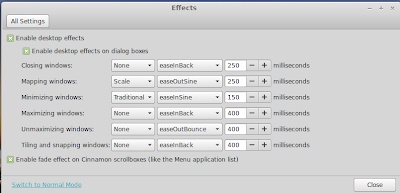


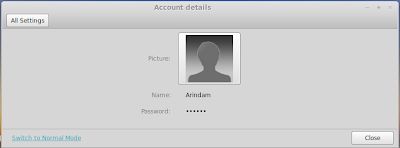
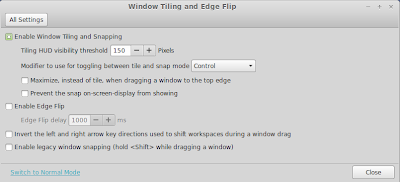
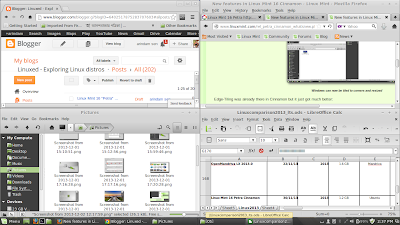
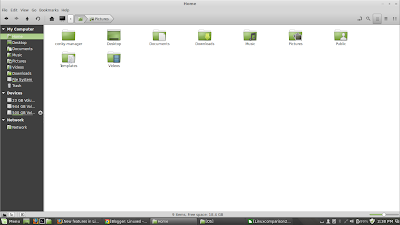


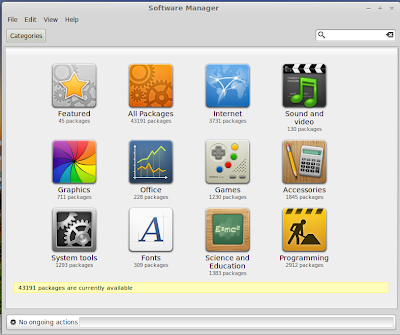
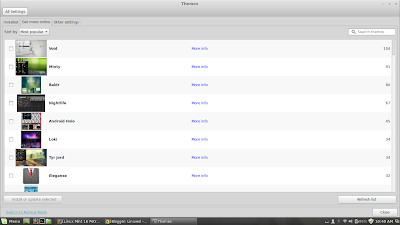

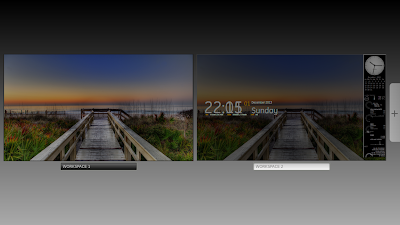

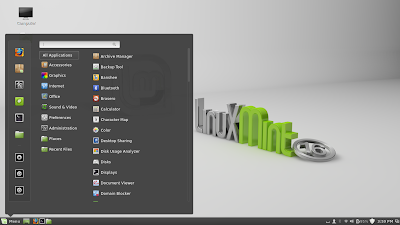


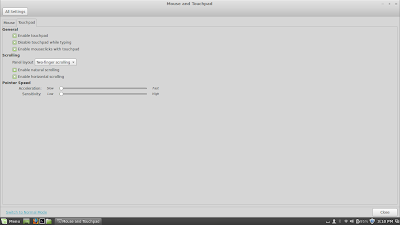


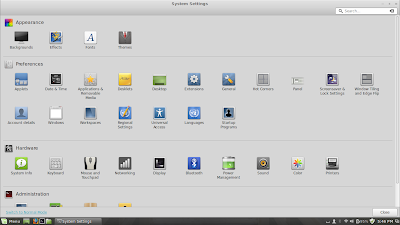

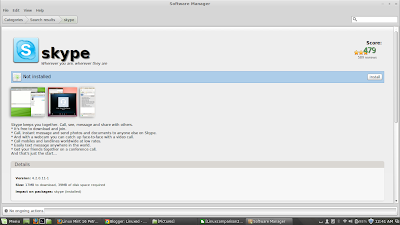
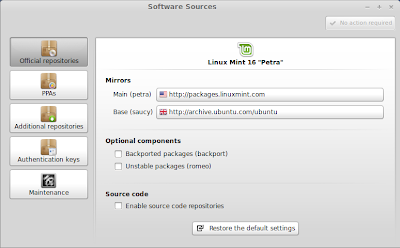
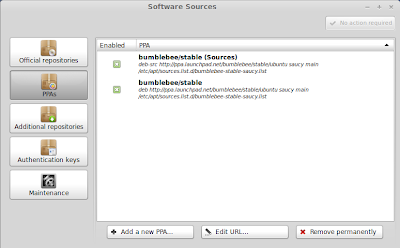
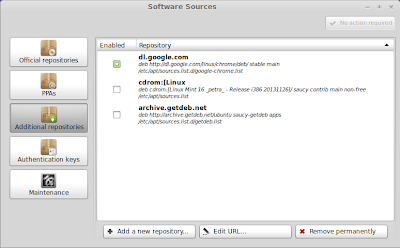

No comments:
Post a Comment